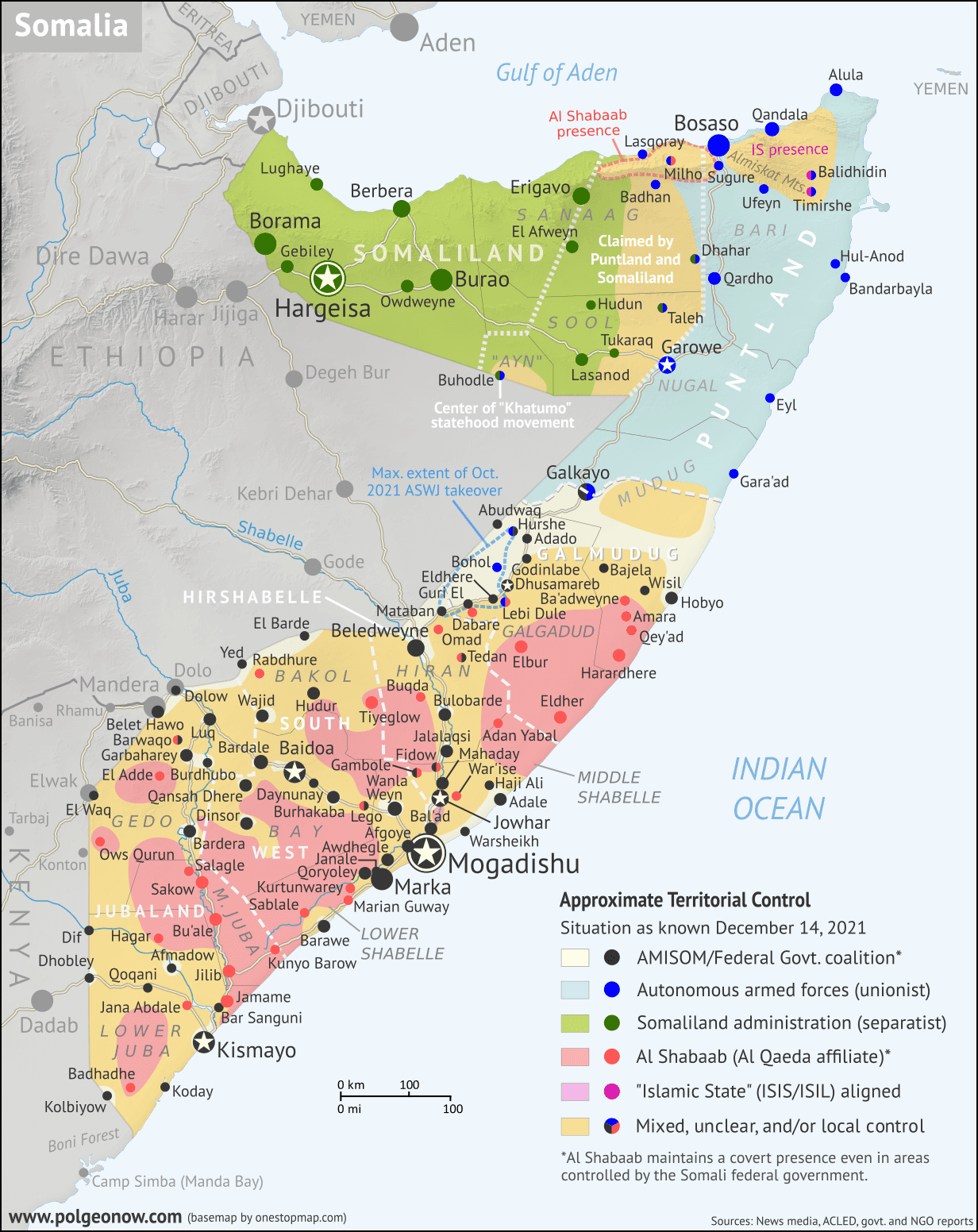This map shows the situation on December 6, 2024, just before the final collapse of the Bashar al-Assad government in Damascus. Though the cities of Homs and Damascus have reportedly come under rebel control since then, the country is now in such disarray that current control can't be accurately mapped.
We plan to publish an update for our subscribers within the next few days, clarifying post-Assad control once the dust has begun to settle.
There are newer editions of this map available. To see them, view all Syria updates.
 |
Base map by Koen Adams of onestopmap.com, with territorial control by Djordje Djukic and Evan Centanni. Area of IS activity is based on 2024 data from ACLED (see footnote for full citation), and reflects a change in methodology from previous editions.
Contact us for permission to use this map. |
Timeline by Djordje Djukic
Return to War: Lightning Offensive and Countrywide Shifts
Twelve days ago, Syria's 13-year-old civil war, mostly dormant for the past four years, exploded back onto the scene with a surprise rebel offensive out of the northwest, which quickly managed to seize the country's second largest city, Aleppo. The lead rebel group was the former Al Qaeda affiliate Hayat Tahrir al-Sham (HTS), though Turkish-backed rebels from the northern border regions also joined the fray, with the two groups quickly taking over the country's second largest city, Aleppo.
As hardline HTS-led forces marched rapidly south, two more rebel fronts emerged, with US-backed fighters in the southern desert expanding out of their longtime safe zone, and a reborn opposition in the southwest recapturing the former rebel stronghold of Daraa. Meanwhile, the Kurdish-led Syrian Democratic Forces (SDF) moved to consolidate their control in the north and east, and over the next ten days moved into areas west of the Euphrates River - including the major city of Deir ez-Zor - as the Syrian military withdrew.
December 6th - the date illustrated on the map above - saw the Syrian military's last major resistance to the surprise rebel assault. The next two days would be a period of government free fall, with rebels apparently entering the city of Homs and national capital Damascus without much resistance. Meanwhile, authoritarian president Bashar al-Assad fled the country as his military withdrew from both cities and the country's central desert, conceding victory in the central conflict of the country's 13-year civil war.
Assad Has Fallen: What's Next for Control in Syria?
Syria is now in disarray, and many questions remain to be answered. What kind of new government will emerge in Damascus? Will former government loyalists hold onto the country's now-isolated coastal region, a traditional bastion of Assad's supporters and still host to his Russian military allies? Will democracy-minded rebel groups work together with the religious-hardline HTS, turn against it, or go their own way in their own strongholds?
One thing that does seem certain: Syria's division isn't over yet. Even if a rebel coalition government secures power over the country's whole west and center, much of the north and northeast remain under control of the Kurdish-led SDF. While the SDF and the provisional government of its controlled areas do still consider themselves part of Syria, they'll likely be in no hurry to submit to any rebel-led administration. For one thing, they're determined to guarantee rights for Syria's Kurdish people before any future reintegration - and likely under pressure from its US patrons to continue the fight against the so-called "Islamic State" (IS, formerly ISIS).
But the Kurdish-led forces in the northeast also aren't on good terms with either of the two most powerful rebel factions. With Türkiye's government labeling the Kurdish militias at the core of the SDF's forces as terrorist groups, Turkish-backed rebels are more enemies than friends to the US-backed coalition (despite the US and Türkiye being allied with each other as fellow NATO members). Meanwhile, it probably goes without saying that the pro-democracy, fiercely anti-IS, US-supported SDF will be wary of cooperation with the religious-hardline HTS, who many fear could become the next Taliban.
To follow our further coverage as post-Assad territorial control develops, visit or bookmark our listing of all Syria control map reports.

 (To see other maps in this series,
(To see other maps in this series, 


 There are newer editions of this map available. To see them, view all
There are newer editions of this map available. To see them, view all 















